Ramen is a popular Japanese noodle soup. It contains wheat noodles (Chinese-style) on either fish or meat broths. Most of the time, Ramen is flavored using miso or sometimes soy sauce. Ramen will not be complete without toppings such as scallions, sliced pork (common topping) nori and Tamago. When it comes to Ramen toppings, there are different ramen toppings that you add to your Ramen for that perfectly good ramen experience. In this guide, let us show you the different types of Ramen Toppings that you can use for your Ramen.
Ramen Toppings and Flavor
There are also different flavors of Ramen, while the basic ramen only contains the ramen broth and the noodles and the common toppings you may want to add more flavors for it to be even tastier.
Ramen is prepared in different ways and in different flavors depending on one’s preferences in terms of flavor. Adding different types of toppings to your Ramen gives your Ramen different flavor and taste.
Different Types Ramen Soup
A traditional ramen is made with Miso soup, however nowadays there are other soup base that are already being used for your Ramen: Miso Paste Ramen Soup Base, Shoyu Ramen Soup Base, Shio Ramen Soup Base and Tonkotsu Ramen Soup Base.
Miso Paste Ramen Base
Miso Paste is the most common soup base for a Ramen. It is actually a Japanese seasoning made by fermenting the soybeans. Not only Miso Paste is used for in Ramen soup, but also used in other Japanese cuisine especially dishes that requires ramen broths.
Shoyu Ramen Base
Shoyu is another soup base for your Ramen. It is made using meat or chicken broth combined with soy sauce. Shoyu Ramen soup base is a lighter base than Tonkotsu Base.
Shio Ramen Base
Shio simply means Salt. Therefore Shio Ramen Soup is made with meat or chicken broth with additional salt. Broth for Shio ramen is usually pale to golden yellow, though it depends on what broth it is and what vegetables are used.
Tonkotsu Ramen Base
Tonkotsu Ramen is made from pork marrow or pork bones to make broth. The broth is prepared by boiling pork bones for about 8 to 12 hours. The amount of time to prepare this broth is what makes this broth special.
How to make ramen taste even better
To make your ramen even taste better is to start with the base soup. Make sure to choose the right base soup. Next, is the noodles used. Make sure the noodles are properly cooked. There are different varieties of noodles used for Ramen, we have the Soba, Somen and Udon.
Most of the time, Ramen has a bland taste. That is why to make it taste even better you will need to add different types of toppings. These toppings can either be vegetables, seasonings and spices, meat and condiments. You can also add sauces or braised pork belly too.
Different Types Of Ramen Toppings
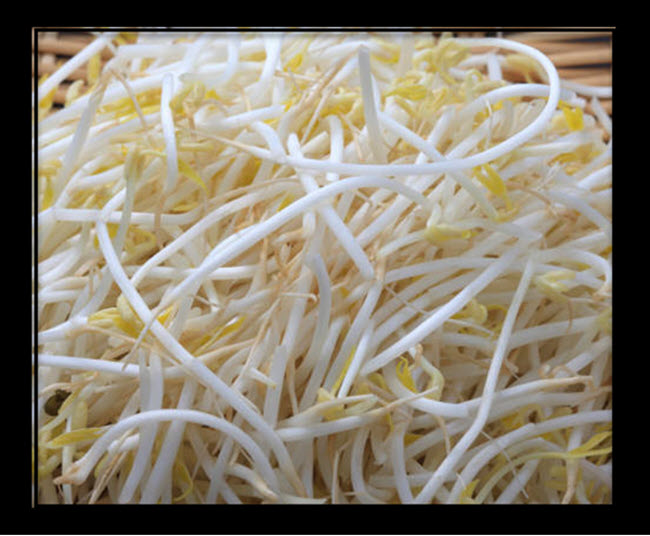
Moyashi (Bean Sprouts)
Moyashi is the Japanese term for Bean Sprouts that can either be cooked or raw. It is the most widely used Ramen Toppings.
There are two versions of Moyashi used as Ramen toppings, it can either be half-boiled or fully cooked. Although half boiled bean sprouts is more crunchier than fully cooked, individuals prefer the half boiled bean sprouts. But in Japan, both versions are used for Ramen topping.
Moyashi gives your Ramen that sweet and nutty flavor.
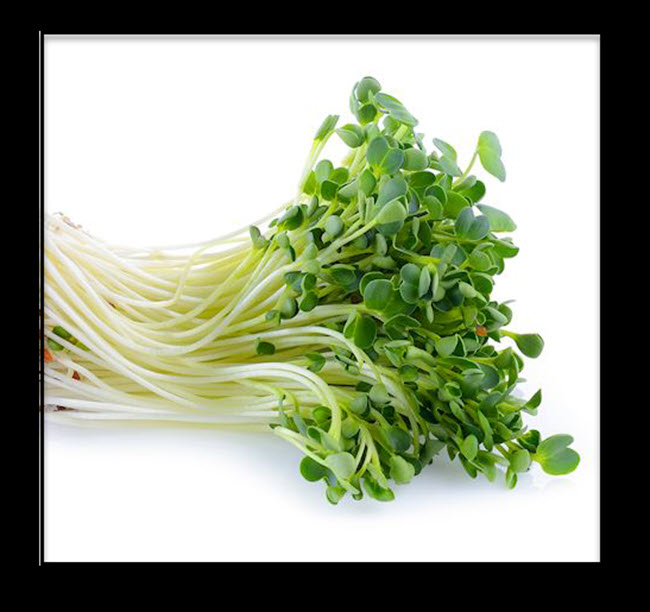
Kaiware (Radish Sprouts)
Kaiware is also known as Radish Sprouts. It is similar to bean sprouts. It gives your ramen that mild and with a hint of pepper flavor.
AoeNegi (Chopped green onions)
Negi o Green onions is a garnish that is used not only on Ramen but in other Japanese Dishes as well. Chopped Green onions is also called Aonegi. Most of the time, Sliced or chopped green onions are used as a topping for your Ramen.
Green Onion can enhance an aromatic taste to your Ramen when used as a topping.
Karanegi on the other hand are spring onions that are mixed with chili oil then added to the bowl of ramen.

Shiraga Negi (Julienned Green Onions)
Shiraga Negi or Shiraganegi is another green onion with a specific cut. It is literally a white-haired green onion. It is called as such because the white part of the onions are shredded and cut into thin strips at a vertical angle.
Shiraganegi or Aoenegi are the most common Ramen toppings.

Chashu Pork
Chasu Pork is one of the most popular for Tonkotsu ramen. Chasu means braised pork. It consists of pork fat that is either braised or simmered slowly. The fatty pork is thinly sliced. Most of the time, Chasu pork is placed on top of the ramen noodles on your Ramen when served. There can either be 2 large slices of the thinly sliced pork in a single serve, or depending on the restaurant. Though you can always request for an additional slice if you want.
In preparing Chasu, the pork needs to be marinated first in soy sauce, miso and salt.
The taste of Chasu depends on the cut of the pork used:
- Rosu: The lean part of the pork. A perfect choice for individuals who do not want too much oil that comes from meat fats.
- Butabara: The Belly part of the pork. Great choice for those who likes fatty meat.
- Katarosu: The pork Shoulder that consists of both fatty and meat part.
There are instances where not everyone can handle pork, not worry as there are other Chasu substitutes out there such as Chicken Chasu, Beef Chasu and Duck Chasu.
Kakuni is another type of Chasu, but this one is a braised pork belly chashu. A good alternative to Chasu.
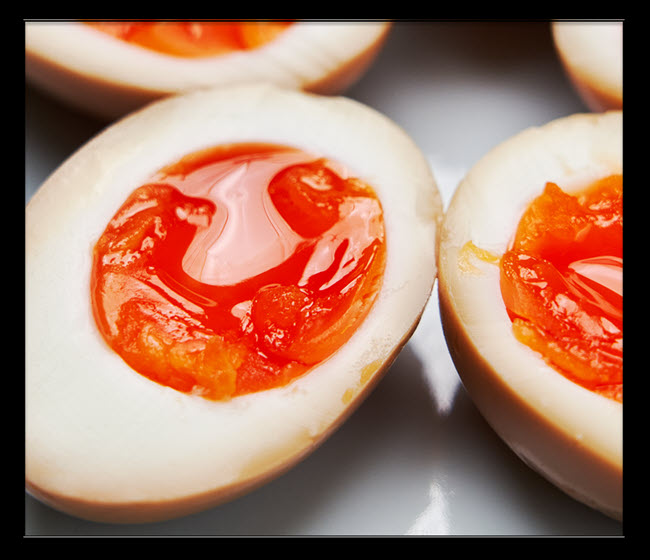
Tamago (Flavored Egg)
Tamago or also called Ajitama or Nitamago. Another common and popular Ramen topping.
Tamago, in Japan means omelet. It is mixed with the soup base of your Ramen. Ajitama is a flavored egg with runny yok with brownish color. Since it is a runny yok, its flavor is savory. Nitamago, is another Tamago variation wherein hard boiled egg is used as Ramen toppping.
Tamago Toppings can either be hard-boiled, fried, marinated, omelet, soft boiled and sometimes boiled. Therefore if you see Tamago as a choice for topping on the menu, it simply means Egg topping.
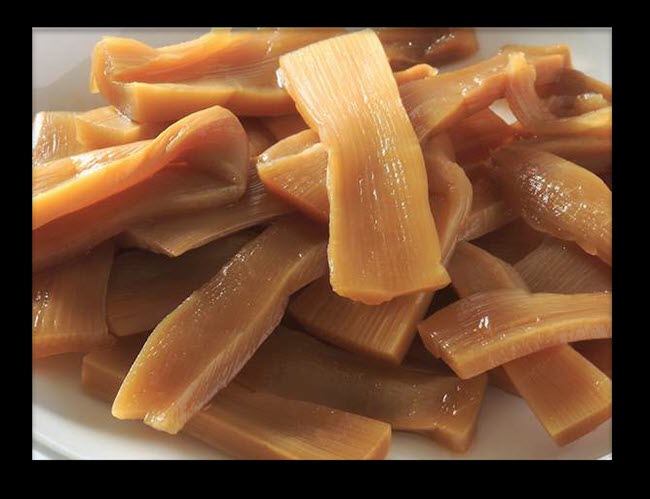
Menma (Fermented bamboo shoots)
Menma is a fermented bamboo shoots used as Ramen toppings. Machiku, is the type of Bamboo that is used to make Menma topping. It typically grows in Taiwan and Southern part of China. It is called Menma from the words ra”MEN” and “MA”chiku
Bamboo shoots have to go through the lacto fermentation process that is why Menma toppings is not always readily available as a topping for Ramen noodles.
When Menma is used for as Ramen toppings, it give that sour taste since the bamboo shoots are added with mustard and salt. It’ll also give your ramen that deliciously yellowish colored ramen broth soup.
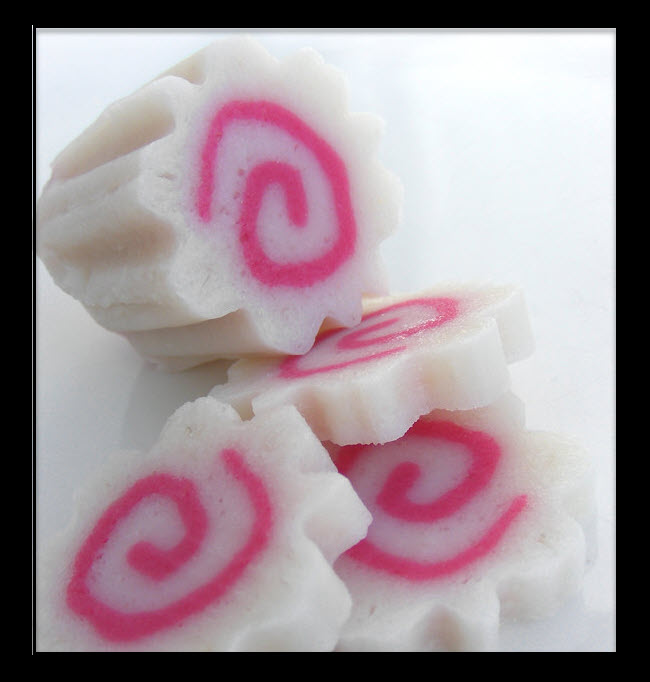
Kamaboko (Steamed Fish Cake)
Kamboko in Japan means Fish cake. It is also referred to as Kamaboko. The fish cake is made Surini or Kane which is a white fish paste.
Kamboko is used as Ramen topping wherein small pieces of this steamed fish cake are placed on the noodle dishes.
There are different varieties of fish cakes but the most common one is the Narutomaki or white fish cake that has a swirly pink design. Typically a white colored fish cake with an edge that resembles a saw tooth.

Flank steak
Flank steak is made using the flank area of the beef. It is a cut from the animal’s chest (lowest part). It is known to be rich in fat and proteins.
Flank steak is a good options to be used as a Japanese ramen toppings.

Corn
Corn are versatile that it is not only used in Japanese Cuisines but in other dishes as well.
When used as topping, it is commonly added to miso ramen as its topping. The corn kennels are simmered than added to miso ramen. Not only will the corn add color to the ramen but also adds sweetness that is perfect when combined with the savory taste from miso ramen soup.

Nori (Dried Seaweed)
Another popular Ramen topping is Nori, or Dried Seaweed. These are Dried Edible algae that is commonly seen as a flattened sheet of. The sheets are cut into squares and are then added to your ramen noodles.
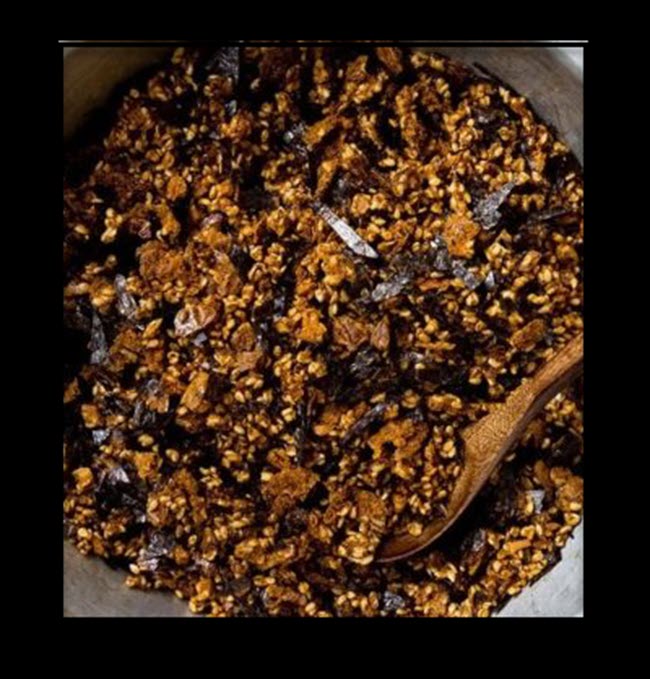
Furikake (Dry Japanese Condiment)
Furikake is a traditional condiment in Japan as a garnish to add flavor and taste to dishes such as rice. When used as ramen topping, it can add to the sweetness while at the same time gives that salty flavor of your ramen noodles.

Kimchi
Although Kimchi is a famous Korean dish, it can also be used as a ramen topping. In fact, Japanese also loves to eat Kimchi. And recently, it has gained its popularity in other countries as well.
Kimchi is made using spring onions, garlic, peppers, radish and the most important and main ingredient is the use of napa cabbage or bok choy Kimchi.
If you are looking to an aromatic and spicy flavor to ramen, Kimchi is a great option.

DoenJang (Miso paste)
In a regular ramen noodle, miso is a common flavor for that noodle soup. Therefore Doenjang or Miso paste can also be used as toppings for your ramen.
If you want to add that extra sweetness yet tangy and savory flavor to your ramen, you can add extra more Doenjang topping.

Shiitake Mushrooms
Shiitake Mushrooms is not actually a traditional ramen toppings for Japanese ramen, but it can also be used as a topping. Mushrooms are the preferred toppings for vegans.
If you want ramen to have a meaty with a touch of buttery texture, adding shitake mushroom is a great choice. If topped on a ramen with a thick based, it will strengthen its flavor.
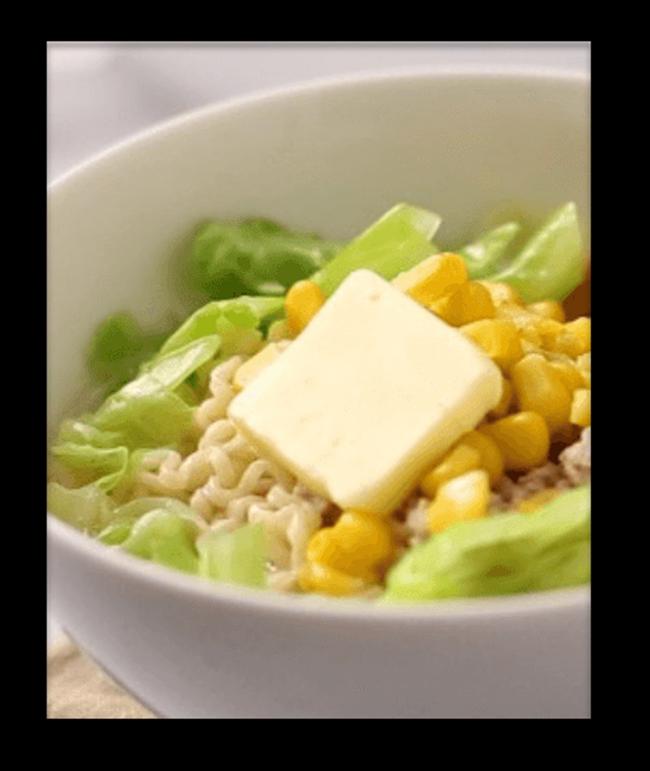
Butter
If you are wondering what is Butter have to do with Japanese ramen. Butter is not actually a part of a traditional ramen recipe, though if you want to your ramen to have that creamy flavor then you can use Butter as a topping.
Used mostly in soup base with thin liquid such as with Miso paste and or Shio soup base. Adding butter to these soup base will enhance its flavor for a creamy noodle soup.
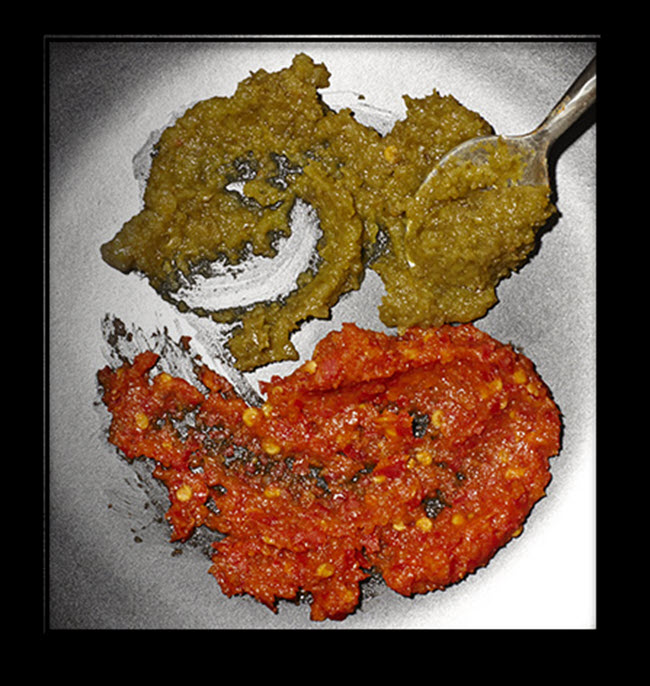
Yuzokosho (Fermented Yuzu and Chili Paste)
Yuzokosho when used a ramen topping give ramen noodle soup that bittery taste that come s from Yuzu peel. Yuzokosho is actually a seasoning powder that is made by drying the yuzu peels.
Yuzokosho can also be combined with salt and chili peppers to intensify its taste.

Cheese
If you haven’t heard this before but cheese is actually a popular ramen toppings for instant ramen noodles. Not only because cheese is everybody’s favorite, it is also accessible and budget friendly too.
There are instances when instant ramen noodles are prepared for to have a quick ramen noodles. Adding cheese provides the instant ramen noodles soup that “mac and cheese” flavor that everyone will adore. Simply put a slice of cheese to be melted on the instant ramen bowl with hot noodles will help soften the noodles faster.

Gochujang (Red Chili Paste)
Gochujang is made using soybeans that are fermented, salt, rice and red chili peppers. Although it is a Korean condiment, you can’t go wrong with using Gochujang as toppings for your ramen. It will definitely add that tangy and spicy taste to your Japanese ramen bowls.
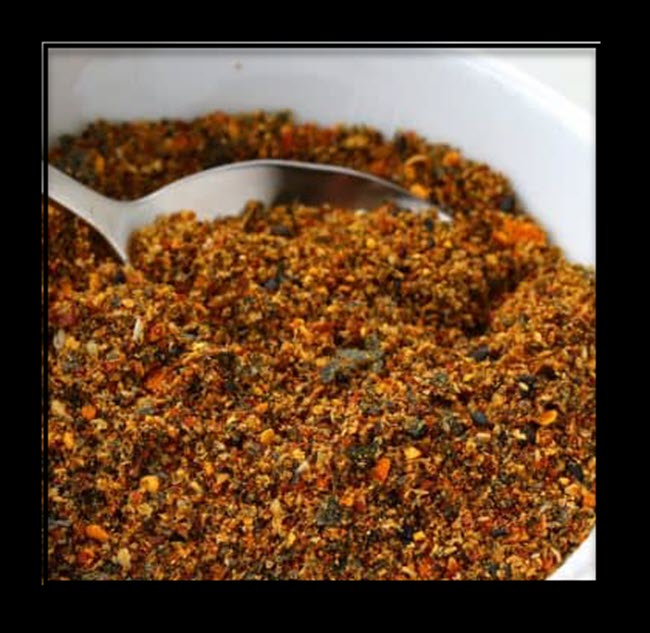
Shichimi Togarashi
If you are looking for that ramen spicy flavor for your ramen bowl, you can use Schichimi Togarashi. It is known for as the 7-spice blend in Japan.
Shichimi Togarashi composed of spices such as black and white sesame seeds, chili peppers, Sichuan peppers, dried orange peel, poppy seeds, ground ginger and dried seaweed.
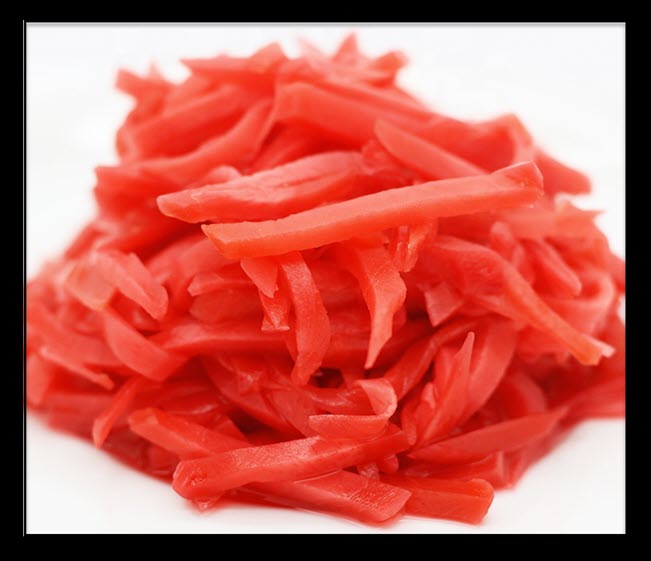
Beni Sh?ga (Pickled ginger)
Beni Shoga or also known as Pickled Ginger is a Japanese preserved vegetable. It is made with ginger that is pickled in Umezu, a brine solution. And are then dyed using red perilla leaves.
Using Pickled ginger as topping will give your ramen that sour flavor and taste.

Karashi Takana (Spicy Pickled Mustard Greens)
Karashi Takana is a combination of Spicy Takana mustard and chili what will give your Japanese dish that crunchy with a hint of spiciness.

Daikon Oroshi (Ground Daikon Radish)
If you want a spicy ramen, you can add ground daikon radish or Daikon Oroshi to your Japanese ramen dish. It will give you that mild sweet flavor aside from that spicy tingly taste.

Kikurage (Wood Ear Mushrooms)
Kikurage is a ramen garnish. In Japanese restaurants, you can always see this on the menu.
Kikurage in edible mushroom also known for as wood ear. It has a chewy texture. When adding Kikurage to ramen bowl as topping, you need to soak the mushrooms in water, slice to strips then add as topping.

Takanazuke (Pickled mustard leaf)
Takanazuke is a picked mustard leaf that can also be used as toppings for ramen.
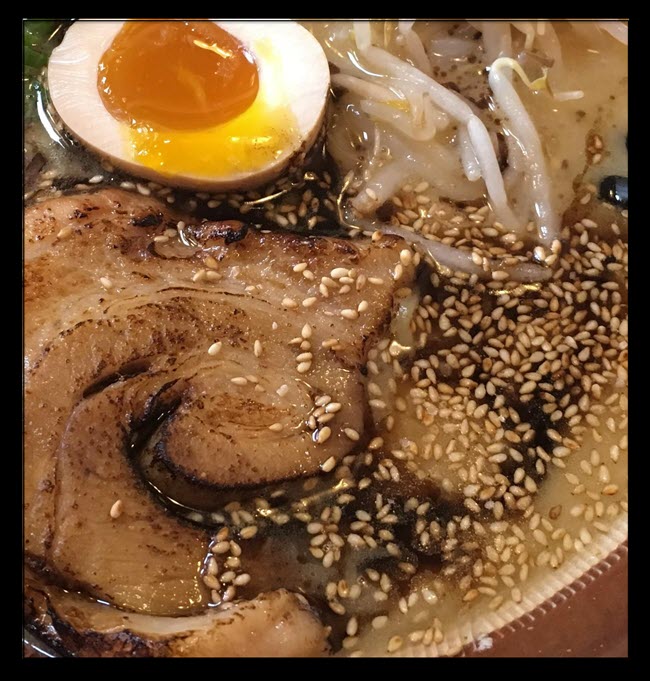
Sesame Seeds
For Shio ramen base soup, sesame seeds is the most common topping to use. The sesame seeds are grind and added to ramen.

Fried Vegetables
For miso ramen, fried vegetables are a great choice for topping. Examples of fried vegetables for ramen toppings includes carrots, bean sprouts or cabbage and a lot more.
FAQS
Adding vegetables to your ramen does not only add flavor but also increases its nutritional value that you body can benefit from.
Here are some of the vegetables that you can add: Lettuce, Cabbage (cut into thin slices), Bean Sprouts, Watercress, Scallions, Peas, Corn, Carrots, Cauliflower and Broccoli
Instant ramen have pre-packed seasonings included in the package. The seasonings are high in MSG and also contains high amount of sodium. Therefore it is not recommended to use ramen seasonings or even consume instant ramen. For a healthier ramen, make your own ramen at home using fresh vegetables and toppings instead of instant ramen.
Conclusion
There are a lot of toppings that you can add to your Japanese ramen dish that can either be meat or vegetables. The toppings can be added to the ramen as a single topping or you can mixed 2 or more toppings at a time.
We hope that this guide has helped you learn more and understand the different toppings that you can add to your ramen dish that will make your ramen experience to whole new level.
Have you tried some of these toppings? How was it? Let us know what you think.

